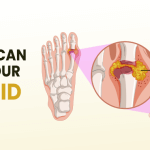Table of Contents
Introduction: The Evolution of Anatomical Learning
The field of human anatomy has long been a cornerstone of medical education, serving as the foundation for understanding the intricate structures and systems that constitute the human body. Traditional methods of teaching relied on static textbooks and two-dimensional illustrations, often making it challenging for learners to grasp the spatial relationships and complexities of anatomical structures. However, the advent of digital technology has ushered in a new era of anatomical learning, characterized by interactive and immersive experiences.
The Visible Body Human Anatomy Atlas emerges as a pivotal player in this transformative landscape. In a world where digital resources have become essential for education, this atlas presents an innovative approach to anatomical study. By offering dynamic 3D models, interactive features, and real-time dissections, the atlas bridges the gap between traditional learning methods and modern technological advancements. As we delve deeper into the features and functionalities of the Visible Body Human Anatomy Atlas, its significance in redefining the way we explore the human body becomes increasingly evident.
Features and Interface: Navigating the Digital Anatomy Atlas
Navigating the Visible Body Human Anatomy Atlas is a seamless and intuitive experience. The user interface is designed to be user-friendly, ensuring that learners of all levels can easily access and interact with the atlas’s wealth of information. The atlas provides a virtual journey through the human body, enabling users to explore anatomical structures in remarkable detail. The 3D models are intricate and accurate, allowing for a holistic understanding of spatial relationships and anatomical configurations.
One of the standout features of the atlas is its system-by-system approach. Users can selectively focus on specific systems, such as the skeletal, muscular, circulatory, nervous, and respiratory systems, among others. This customization empowers learners to tailor their exploration based on their unique learning objectives. Whether studying the intricacies of the cardiovascular system or delving into the complexities of the nervous system, the atlas provides a comprehensive view of each system’s components and interactions.
Immersive Learning: Interactivity and Customization
The hallmark of the Visible Body Human Anatomy Atlas lies in its interactivity and customization options. Traditional anatomy textbooks often struggled to convey the dynamic nature of anatomical structures and their relationships. In contrast, the atlas enables users to virtually dissect structures, peel back layers, and even explore cross-sections in real time. This hands-on approach to learning facilitates a deeper understanding of the interplay between different systems and structures.
Customization is a key feature that distinguishes the atlas from conventional resources. Users have the freedom to manipulate views, isolate specific structures, and toggle between different layers. This interactivity is particularly valuable for learners who wish to explore specific areas of interest or revise challenging concepts. The ability to control the level of detail and view structures from multiple angles empowers learners to engage with the material in a way that suits their individual learning styles.
Bridging Theory and Practice: Clinical Application and Case Studies
Anatomy forms the basis for clinical practice in the medical field. Understanding how anatomical structures relate to various medical conditions and procedures is crucial for healthcare professionals. The Visible Body Human Anatomy Atlas recognizes this connection and offers a range of clinical applications and case studies.
Medical students and practitioners can benefit from the inclusion of clinical scenarios, pathology overlays, and case studies within the atlas. These elements provide a bridge between theoretical knowledge and practical application. By visualizing how anatomical structures are impacted by diseases or surgical interventions, learners gain insights that are essential for diagnosing and treating patients effectively.
Animating Anatomy: Physiological Processes in Motion
One of the most captivating aspects of the Visible Body Human Anatomy Atlas is its inclusion of physiological animations. These animations breathe life into anatomical structures by depicting dynamic processes in motion. Learners can witness the beating of the heart, the contraction of muscles, and the flow of blood through arteries and veins.
These animations serve as powerful educational tools, enabling learners to comprehend complex physiological processes that are challenging to convey through static images. By visualizing how systems interact and function in real time, learners develop a more holistic and comprehensive understanding of the human body’s dynamics.
Educational Enhancement: Teaching Tools and Engagement
Educators play a pivotal role in shaping the next generation of medical professionals. The Visible Body Human Anatomy Atlas serves as a versatile resource that empowers educators to create engaging and interactive learning experiences. The atlas offers tools for educators to develop custom quizzes, assessments, and presentations that align with their teaching objectives.
The atlas’s versatility is further highlighted by its compatibility with various devices and platforms. Whether in a traditional classroom or a remote learning environment, educators can leverage the atlas to enhance their teaching methods and facilitate active student engagement. This adaptability ensures that the atlas remains a relevant and valuable resource across different educational settings.
Accessibility and Future Innovations: Staying Relevant in Education
In an era where technology evolves at a rapid pace, the accessibility and continuous development of educational resources are crucial. The Visible Body Human Anatomy Atlas recognizes this need and ensures its accessibility across multiple devices and platforms. This accessibility fosters an inclusive learning environment where learners can access the atlas’s features regardless of their preferred device.
The commitment to ongoing updates and improvements is a testament to the atlas’s dedication to staying at the forefront of anatomical education. As technological advancements continue to emerge, the Visible Body team’s commitment to enhancing the atlas’s features and visualizations ensures that learners can expect a dynamic and up-to-date learning experience.
Real-world Impact: Testimonials and Success Stories
Real-world testimonials from users of the Visible Body Human Anatomy Atlas underscore its significance in education and medical practice. Medical students, educators, and healthcare professionals share their experiences of how the atlas has transformed their learning and teaching approaches. These firsthand accounts provide valuable insights into the tangible impact that the atlas has on anatomical education.
From students expressing newfound enthusiasm for anatomical study to educators witnessing increased student engagement, these testimonials offer a glimpse into the atlas’s real-world contributions to the field of medical education. By fostering a deeper understanding and appreciation of the human body, the atlas shapes the educational journey of learners and prepares them for successful careers in healthcare.
Limitations and Future Directions
While the Visible Body Human Anatomy Atlas offers a comprehensive and immersive learning experience, it’s essential to acknowledge any limitations. These might include potential technical challenges, limited access to specific features on certain devices, or the need for ongoing internet connectivity to use the atlas effectively.
Looking ahead, the atlas’s future directions are exciting to contemplate. As technology continues to evolve, there is potential for even more sophisticated simulations, increased interactivity, and enhanced visualization features. The atlas’s commitment to growth and improvement ensures that learners can anticipate a continually enriching educational resource.
Conclusion: Embracing the Future of Anatomical Learning
In conclusion, the Visible Body Human Anatomy Atlas stands as a pioneering resource that has reshaped the landscape of anatomical education. Through interactive 3D models, real-time dissections, physiological animations, and clinical applications, the atlas provides a multidimensional and immersive learning experience. By combining the best of traditional anatomy education with the possibilities of digital technology, the atlas encourages a deeper appreciation for the complexities and wonders of the human body.
As we journey further into the digital age, the Visible Body Human Anatomy Atlas serves as a beacon of innovation and excellence. Its user-friendly interface, interactivity, and commitment to ongoing development ensure that learners, educators, and medical professionals have access to a dynamic tool that enhances their understanding and application of human anatomy. Through this comprehensive review, we have explored the numerous ways in which the atlas empowers learners to explore, learn, and engage with the remarkable world of human anatomy.
Website: Visible Body


